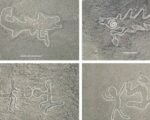The enigmatic ‘Portal to Hell’, long shrouded in myth and legend, has been a source of fascination and fear since antiquity. Located in the ancient city of Hierapolis, now modern-day Pamukkale in Turkey, this site was once believed to be the gateway to the underworld. Recent scientific investigations have shed light on the geological phenomena behind the deadly mists that rise from this historical enigma.
The Deadly Phenomenon
The ‘Gate to Hell’ was reputed to claim the lives of any creature that dared to approach its entrance. Ancient accounts describe birds falling dead mid-flight, their lifeless bodies a testament to the gate’s lethal power. This phenomenon, rooted in Roman mythology, attributed the deaths to the toxic breath of Cerberus, the three-headed hellhound guarding the portal.
Modern science, however, has unraveled the truth behind these mysterious fatalities. Geological studies reveal that the site sits atop a fault line, which emits concentrated carbon dioxide gas. This invisible, odorless gas is heavier than air, forming a deathly layer at the ground level, suffocating any living being that enters its domain.

The Intersection of Myth and Reality
The allure of Hierapolis extends beyond its deadly reputation. The city was a renowned spa destination in the Roman Empire, drawing visitors from far and wide to its healing thermal waters. Yet, it was the ‘Gate to Hell’ that captivated the imagination, intertwining the city’s luxurious appeal with a sense of otherworldly dread.
The temple near the portal, dedicated to Pluto, the god of the underworld, bore inscriptions and offerings from those seeking favor or protection. Archaeological findings suggest that rituals involving animal sacrifices were performed here, perhaps to appease the deities or to demonstrate the priests’ supposed control over life and death.
Science Illuminates the Past
Today, the ‘Portal to Hell’ continues to intrigue scholars and tourists alike. The site serves as a poignant reminder of our ancestors’ attempts to explain natural occurrences through the lens of mythology. It also stands as a testament to the progress of science, which allows us to view the world through a more informed perspective.
The research conducted at Hierapolis not only demystifies the past but also enriches our understanding of ancient cultures. It bridges the gap between legend and fact, revealing the ingenuity with which our predecessors interpreted the world around them.













